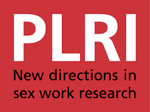Article in AIDS Educ Prev 2011 Aug;23(4):299-312.
This study explored perceptions of HIV following local introduction of antiretroviral therapy (ART), among 30 HIV-positive and HIV-negative female sex workers (FSWs) and 10 male bar patrons in Mombasa, Kenya. Semi-structured interviews were analyzed qualitatively to identify determinants of sexual risk behaviors. ART was not perceived as a barrier to safer sex and in some cases led to decreased high-risk behaviors. Barriers to safer sex included economic pressure and sexual partnership types. Many women reported that negotiating condom use is more difficult in long-term partnerships. These women favored short-term partnerships to minimize risk through consistent condom use. For women living with HIV, concern about maintaining health and avoiding HIV superinfection was a strong motivator of protective behaviors. For HIV-negative women, a negative HIV test was a powerful motivator. Incorporation of context- and serostatus-specific factors (e.g., self-protection for HIV-positive women) into tailored prevention counseling may support high-risk women to reduce risk behaviors.
Theme:
Author:
McClelland L, Wanje G, Kashonga F, Kibe L, McClelland RS, Kiarie J, Mandaliya K, Peshu N, Kurth A.

